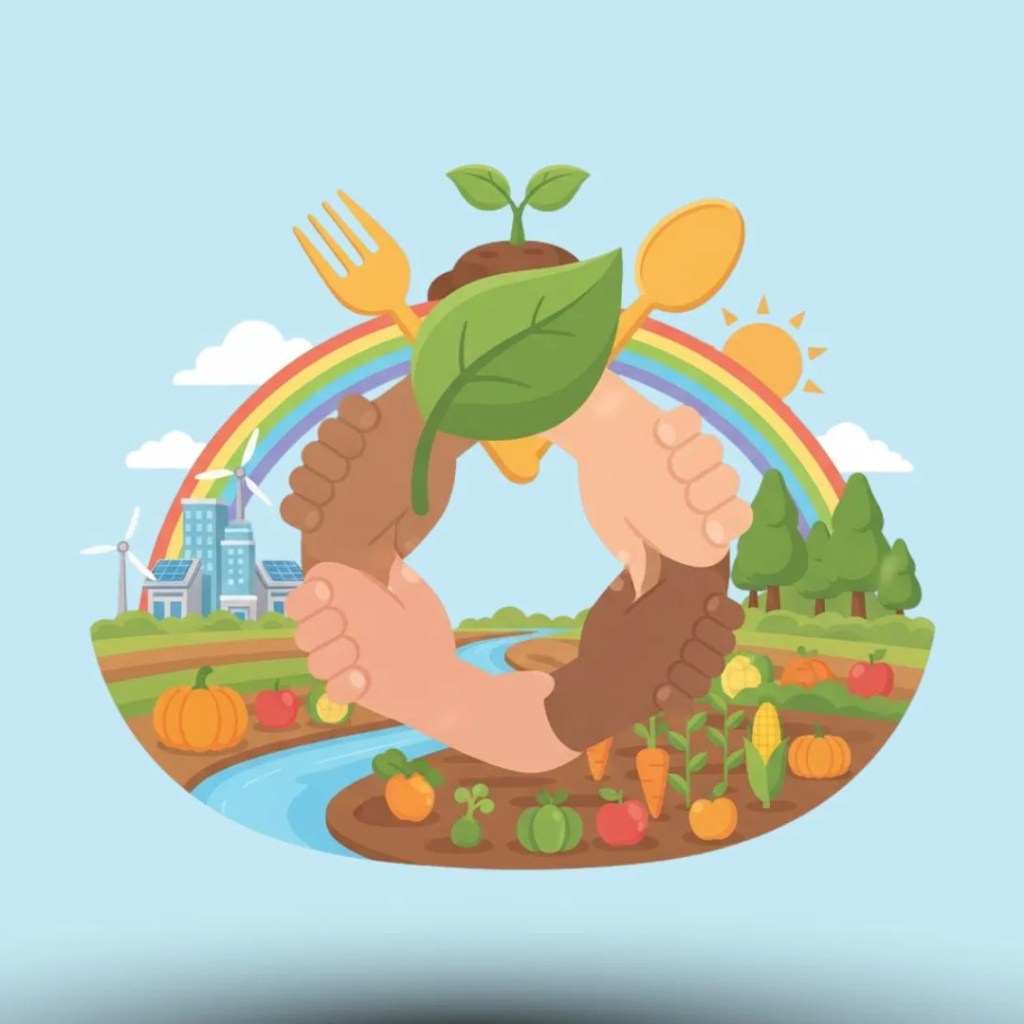As educators, teachers hold a powerful position to raise awareness, stimulate thoughtful conversations, and cultivate empathy among students on these urgent challenges. This blog explores actionable ways that educators can integrate the 2025 World Food Day theme into their classrooms and communities, empowering students to be informed, compassionate advocates for global food justice.

Table of Contents
World Food Day is celebrated every year on October 16 to raise awareness about global hunger, malnutrition, and promote sustainable food systems for all. In 2025, World Food Day marks the 80th anniversary of the United Nations Food and Agriculture Organization (FAO), highlighting the urgent need to address food insecurity and build resilient, inclusive food systems worldwide.
Origins and Purpose
World Food Day was established in 1979, with its inaugural celebration in 1981, and commemorates the FAO’s founding in 1945. Its primary goal is to unite governments, organizations, and individuals to tackle issues of hunger, malnutrition, and access to nutritious food.
Theme for 2025
The theme for World Food Day 2025 is “Hand in Hand for Better Food and a Better Future,” emphasizing collaboration across sectors and generations to create sustainable and equitable food systems. This year’s theme calls for partnerships among governments, farmers, researchers, businesses, and communities; it also seeks to address the imbalance between global hunger in some regions and rising levels of obesity and food waste in others.
Why It Matters for Students
Globally, more than 673 million people still face hunger, with billions more suffering from food insecurity or malnutrition. Food systems also contribute significantly to climate change and biodiversity loss, impacting the well-being of future generations. Teaching students about these realities fosters compassion and global citizenship while encouraging responsible eating habits and environmentally conscious behaviors.
Practical Classroom Activities to Raise Awareness
- Introduce the Theme Through Storytelling and Discussion
Begin by sharing the story of World Food Day, its history with the FAO, and the meaning behind the 2025 theme. Use age-appropriate videos, articles, or stories to explain hunger, nutrition, and sustainability. Facilitate a classroom discussion with questions like, “Why is it important to work together to solve global hunger?” and “How does food affect our health and the planet?”
- Engage in Reading and Critical Thinking
Provide students with differentiated reading materials about hunger statistics, food production, and the theme’s message. Encourage them to underline new words, ask questions, and share their feelings about the issues. Follow up with reflective questions like, “What can we do in our school or community to help?”
- Organize Creative Projects
- Poster and Slogan Contests: Ask students to design posters or slogans that reflect messages about food security, nutrition, or reducing waste based on the theme.
- Essay or Speech Writing: Older students can write essays or deliver speeches exploring the importance of sustainable food systems and the role of cooperation.
- Art and Role-Play: Younger children can engage in role-playing activities such as pretending to be farmers or nutritionists, or making food-themed crafts to celebrate diversity in diets and cultural food traditions.
- Promote Nutrition and Healthy Eating
Use the day to discuss balanced diets and the benefits of eating locally grown foods. Activities could include creating “healthy meal” charts, tasting sessions of fruits and vegetables, or keeping food diaries to track nutritious eating habits.
- Address Food Waste
Raise awareness about the environmental and social impacts of food waste. You could have students participate in a “zero food waste challenge” or organize food-sharing or donation drives within the school to help reduce waste and support vulnerable populations.
- Incorporate Interdisciplinary Learning
Link World Food Day topics across subjects:
- Science: Explore the nutritional value of different foods or the impact of agriculture on ecosystems.
- Geography: Study global food production patterns and hunger hotspots.
- Mathematics: Use food-related data for statistics or budgeting exercises.
- Social Studies: Discuss food justice, farmers’ livelihoods, and global cooperation efforts.
- Encourage Community Involvement
Invite guest speakers such as local farmers, nutritionists, or representatives from food charities to share their experiences. Organize field trips to farms, community gardens, or food banks if possible. Encourage students to spread awareness by sharing what they have learned with family and friends.
Using Technology and Resources
Take advantage of free teaching materials and toolkits provided by the Food and Agriculture Organization and other educational platforms. These often include lesson plans, worksheets, videos, and interactive activities tailored for different age groups, making it easier for teachers to integrate World Food Day themes into their curriculum.
Beyond the Classroom: Cultivating Lifelong Values
World Food Day is an ideal occasion to instill values of empathy, cooperation, and environmental stewardship in students. When educators engage young people in conversations about food security and sustainability, it inspires them to think globally and act locally—promoting kindness, responsibility, and hope for a food-secure future.
You can access detailed teaching resources and official materials for World Food Day 2025 at the Food and Agriculture Organization’s repository:
https://openknowledge.fao.org/handle/20.500.14283/cd7085en



